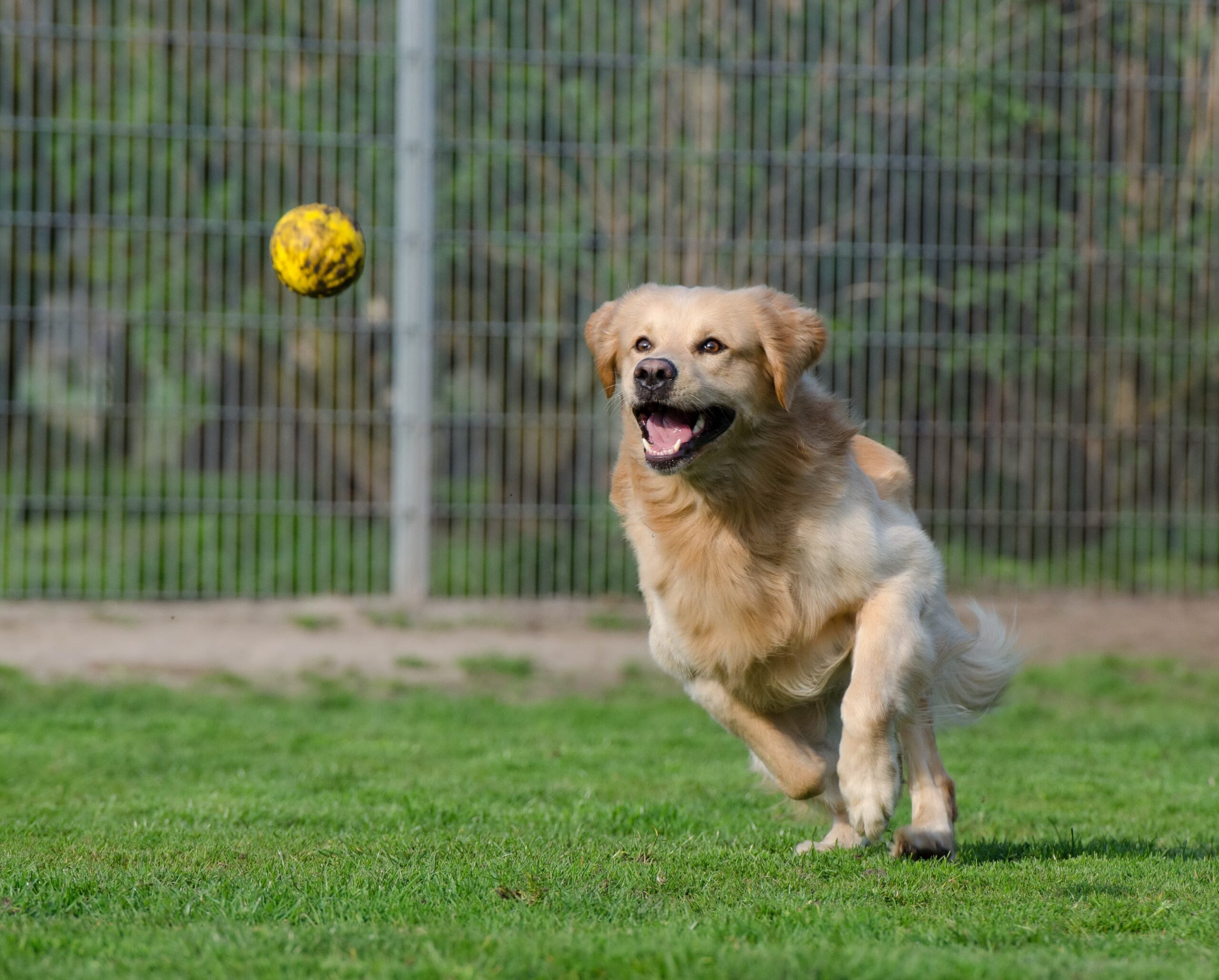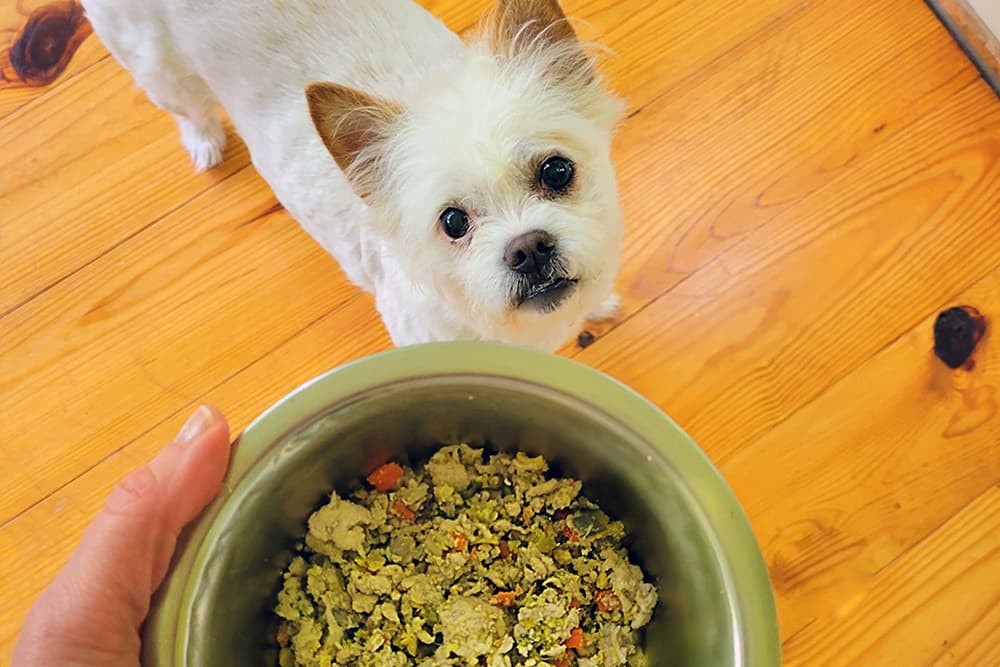Reinventing Playtime: 20 Fun Activities to Do With Your Dog
Published on February 23, 2016

Forget mundane walks around the block and predictable games of fetch. When it comes to staying active with your pets this spring, there are so many other activities that can spice up your daily routine.
Dogs who do the same activities day after day can become under stimulated. Without an outlet, that energy may come out in undesirable ways. Hyperactive behavior, garbage can raids, more pronounced barking, or destructive behaviors can all be signs that your dog could benefit from more creative stimulation. Varying the activity helps keep pets mentally and physically satiated and easier to settle at home.
Ready to give your pooch some new experiences? The following list is sure to help you reinvent your playtime.
Fun Family Outings
Plan some play dates. If your canine is also a social butterfly, playing with other dogs can be thrilling. The dynamics of play are both physically exhausting and mentally stimulating. But dog parks aren’t for every dog, so it’s important to only take your pets to the park if they show ongoing signs of friendly and playful intent rather than stress, fear, or aggression. When visiting a dog park, make sure you can see your dog at all times and that other owners are monitoring their dogs’ behavior.
Go for a swim. Dog-friendly swimming spots, like the beach, riverfront, or lake, can provide numerous activities to share with your dogs if they’re trained to work and play off-leash. Even some senior canines and those with with certain physical limitations can benefit from water exercise, because the activity is easy on joints and offers natural resistance, whether it’s wading in chest-deep water or swimming with assistance. Just be sure to consult your veterinarian before starting a swimming program.
If the water is too deep for your dog to stand, it’s important to use a canine life jacket. Doing so will give your pet more confidence in the water and help ensure a safe return to shore.
Running through the sprinklers or wading through a kiddie pool is a great way to bring the water fun home.
Try a scavenger hunt. Put your dog’s hunting and scavenging abilities to the test by hiding items for her to search out with her nose and keen instinct. Use a cue like “find it” and toss pieces of kibble or small treats immediately out in front of your dog. As she becomes familiar with this command, the food items can be scattered out further and even hidden under objects.
Hit the town. Sociable canines benefit from shared experiences with you. Search out pet-friendly locations, like outdoor dining spots and pet-friendly shops, where your dog can join you.
Take in the great outdoors. Most dogs love being out in nature, and hikes on dog-friendly trails or beaches can provide the opportunity to explore and exercise. Sniffing and exploring is calming for dogs. It engages their mind and allows them to discover and identify different aspects of their environment. Take leisure walks and encourage your dog to follow interesting scents.
If you’re a boater or kayaker, consider taking your well-behaved pooch outfitted with a lifejacket. You can enjoy fishing, camping, and other outdoor activities with dogs, depending on their comfort level and training.
Get fit together. If you and your pooch want to lose some of that unwanted paunch, doing so together can improve your weight-loss efforts. Studies show that dogs are reliable motivators for physical activity and increase the number of steps a person walks each day.
Take your typical walk to the next level by seeking out natural inclines, walking on different surfaces (like sand), or adding bursts of high-intensity running (assuming your vet has approved such a strenuous activity). It’s important to watch for signs of overheating and exhaustion and to stop for water breaks and rest, as needed. For dogs needing an extra challenge, talk to your veterinarian about using a doggy backpack or a weighted canine vest.
Go for the gold. For particularly athletic or energetic dogs, you can find special bike attachments that will allow your pet to run next to you as you bike. This activity will be much more challenging for your dog than it will be for you, so once you’ve gotten the all-clear from your vet, be sure to start with a short distance and slowly work your way up. Running alongside a bike may also require some training. Consider sticking to designated bike trails instead of streets and sidewalks to avoid accidents with cars and pedestrians.
Play hide-and-seek. Hide and then try calling your dog until he finds you. Then reward with a toy or treat. You can also call your dog back and forth between people, rewarding him each time he arrives. These games are fun and build on the reliability of a dog’s recall. If your dog is not trained off leash, always play in a safe, enclosed area.
Indulge your dog’s desire to dig. Some dogs love to dig, and your yard or flower bed may suffer as a result. Simply taking away opportunities to dig rarely resolves the problem, so consider building your dog a digging pit. Build a sandbox,fill a kiddy pool with dirt or sand, or mark off an area of the yard where your dog can have at it. Reward her with praise when she digs in the area, and make it the most fulfilling place to dig by hiding treats for her to discover.
Take your dog for a stroll. Dogs with physical limitations can enjoy the sights, sounds, and smells of outdoor life with a simple wagon or stroller ride.
Try training. Classes can help dogs improve their manners, become certified therapy dogs, or simply gain experience staying calm in highly arousing situations, like being close to other canines on leash. For the fun of it, consider a tricks class to train your dog to perform various tasks, from a high-five to more advanced skills, like riding a skateboard.
For the Canine Athlete
If your healthy dog is an athlete, check out these sports-inspired activities.
Herding. Try herding for sport or simply for fun. For energetic dogs, the competitive sport of Treibball focuses on gathering or herding giant balls and promotes teamwork and communication between a dog and his owner.
Flyball. This is a fast-paced team relay sport that challenges dogs to run a jumping course to retrieve a ball.
Scenting and tracking. Canine nose work classes are becoming more popular. It’s both a sport and a leisure activity for employing a dog’s natural scenting abilities to search out trained scents. Some search-and-rescue groups also allow pets to train along with the team to practice their skills. These dogs can become certified as volunteer search-and-rescue dogs.
Tracking, on the other hand, is a competitive sport that tests a dog’s ability to search out a particular smell.
Dock diving. This can be a fun lake activity or a competitive endeavor. During competitions, dogs run to the end of a dock and jump into the water to retrieve a tossed object. Athletes are gauged on jump distance or height.
Disc dog. If your dog can catch a Frisbee, this may be the sport for you. During the competition, dogs leap to great heights to retrieve flying discs. The freestyle event focuses on the dogs’ athleticism and showmanship as they perform flips, tricks, and multiple catches.
Agility. This sport requires physical endurance and great listening skills, as athletes follow their trainer’s cues to help them navigate an obstacle course.
Rally obedience. Unlike traditional obedience competitions, trainers can verbally encourage and talk with their dog during Rally-O events. Dogs are gauged on their listening skills and ability to follow directions.
Lure coursing. For dogs who love to chase, this event tracks athletes’ speed as they chase after a lure that resembles small game.
Canine freestyle. This event is like Zumba or synchronized dancing with your dog! Dogs learn to follow basic cues and tricks set to music to create a dancing routine you perform with your pet.
Mental and physical exercise is important for an animal’s wellness and affects their emotional and behavioral well-being. So what are you waiting for?
Know Before You Go
Before incorporating a new or more rigorous activity, seek your veterinarian’s advice. He or she may recommend some restrictions based on your dog’s age, breed, and overall health. Your veterinarian can also help ensure that your dog is fully vaccinated and protected for these new outdoor or social adventures. This includes helping to keep your pet safe from parasites like fleas, ticks, and heartworms. Although year-round parasite control is usually a good idea in most areas, many parasites that can harm pets tend to thrive in warmer weather.
This article originally appeared in the Spring 2015 issue of HealthyPet magazine.





